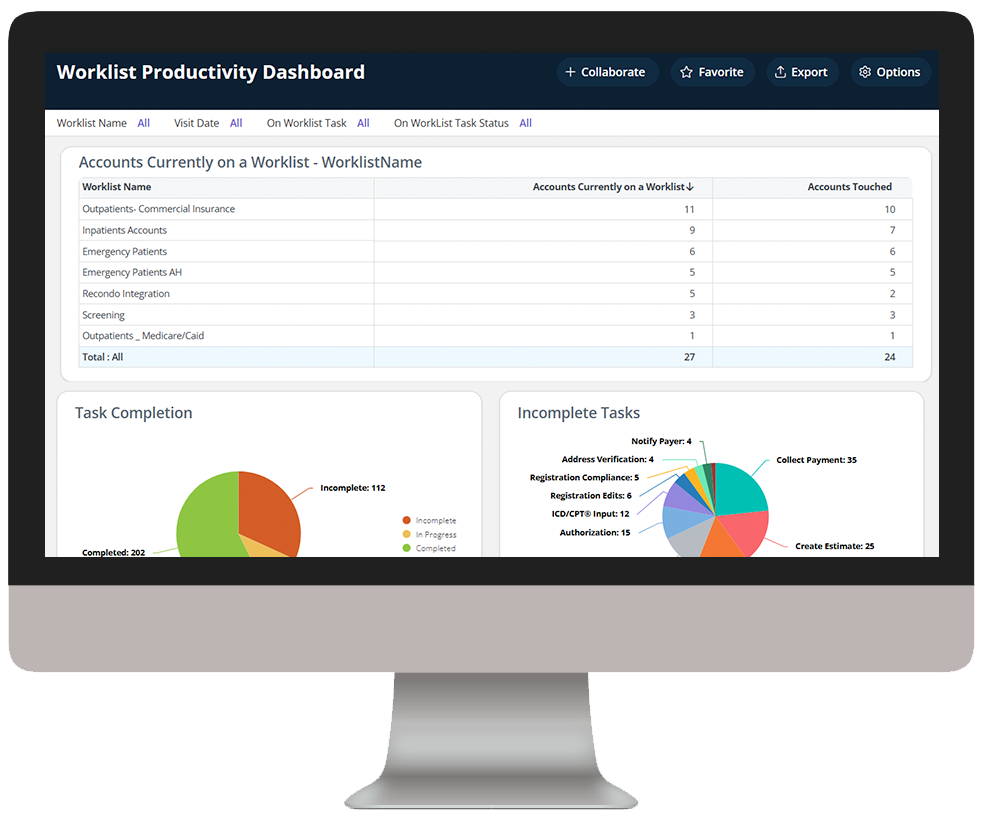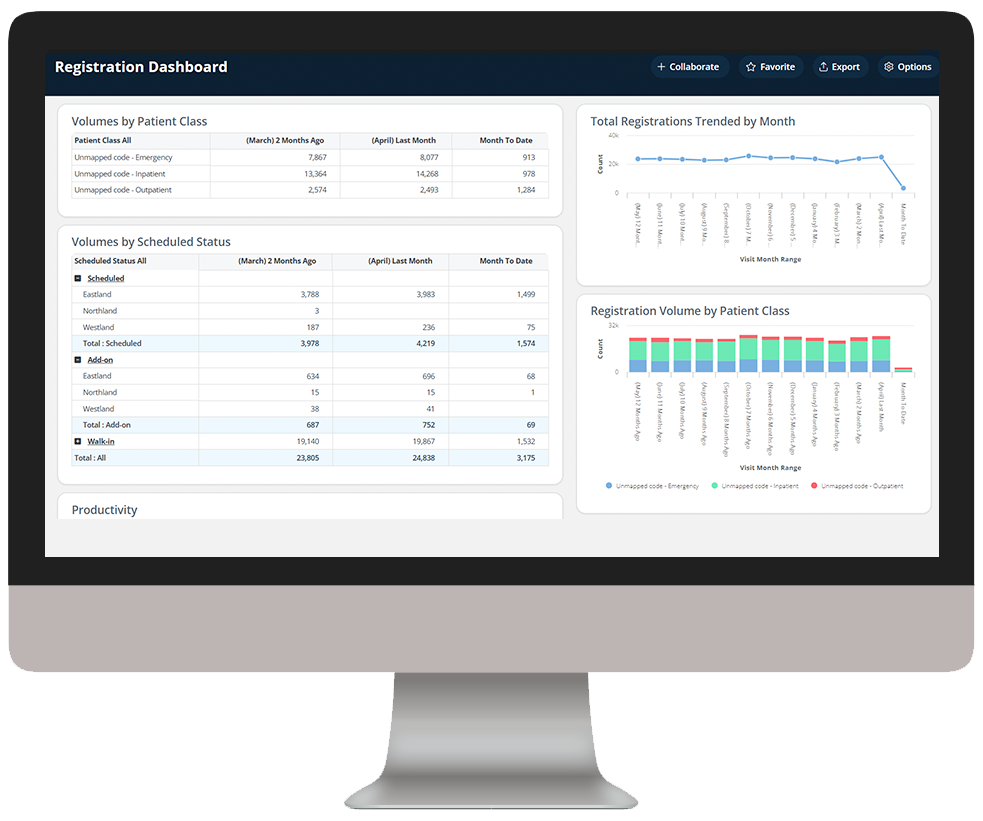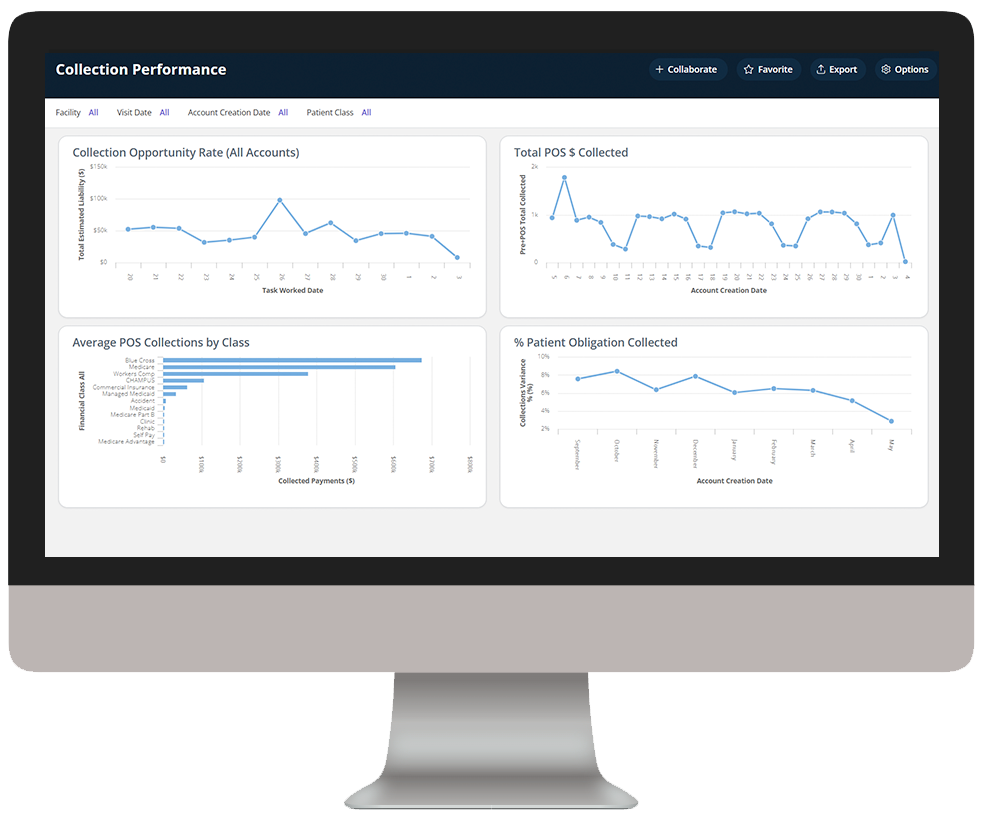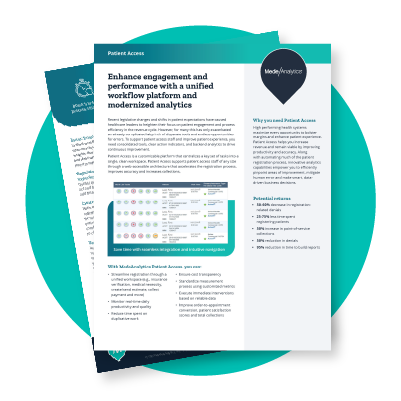Patient Access Insights
Intuitive dashboards and intelligent workflows streamline registration processes
Gaining staff efficiencies, optimizing processes for patient satisfaction, and reducing uncompensated care are critical for modern patient access departments. With intuitive dashboards and automated workflows in a single workspace, your staff can efficiently run patient estimates, improve collections at the point of service, and reduce denials while smoothing out the patient journey.
Deploying analytics to successfully adapt to industry demands
Challenge
Solution
Disparate data collection creates disjointed, expensive and ineffective patient access processes
Challenge
Solution
Insufficient information and human error results in missed collections and bad debt
Challenge
Solution
Limited ability to measure the productivity of remote staff and accuracy of registration tasks
Analytics in action
Our intelligent platform and intuitive user interface make it easy to unlock the value of your data. In as little as three clicks, we bring meaningful insights, powerful visualization and analytics innovation to help you make an even bigger impact at your organization.
Explore a few key features by hovering over the image.
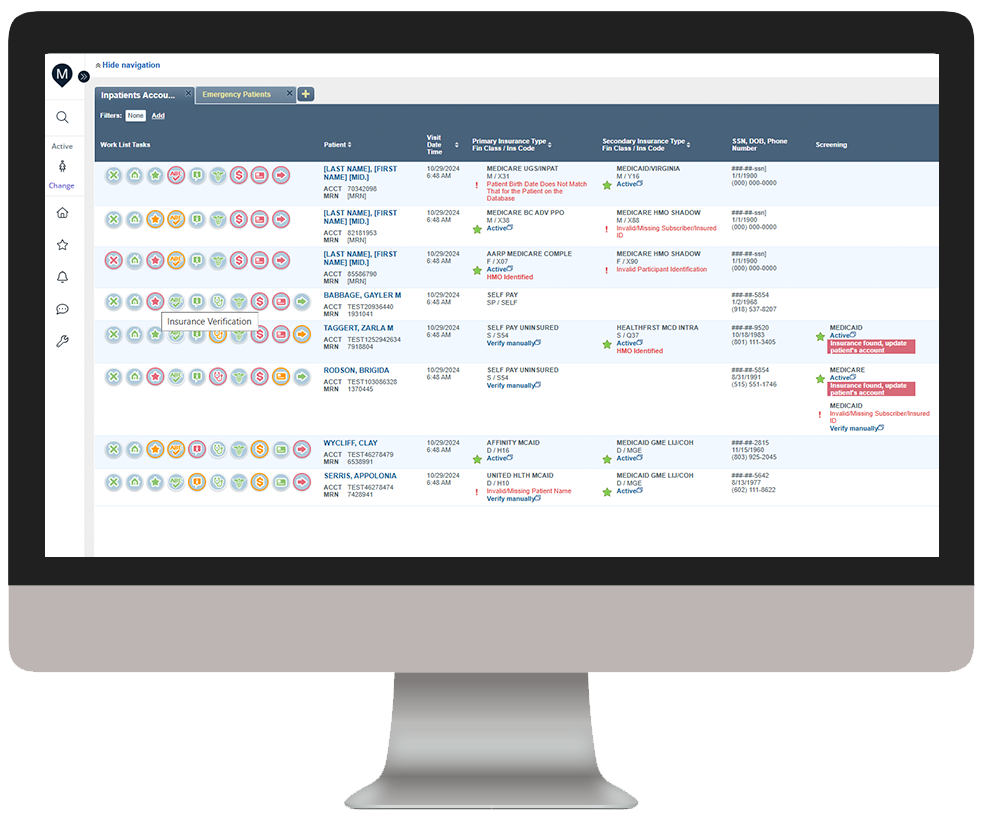
Color-coded worklist steps consolidate all key patent information in one simple, easy-to-navigate screen
Clicking on a patient jumps right to the unfinished tasks with links to all relevant details
Many tasks are automated, including prior authorization when possible
Dive deeper into Patient Access Insights
Download the data sheet for next-level details about the transformative effects of Patient Access on your patient engagement, front-office productivity and financial health.
Get our take on industry trends
Kick your revenue cycle into a new gear for the new year
Billions of dollars have been invested into electronic health records—and as we’ve said before, they’re great at what they do.…
Read on...The imperative of value-based care: How it’s going and where it’s headed
In the evolving landscape of healthcare, the transition to value-based care stands out as one of the most pivotal initiatives.…
Read on...5 FAQs about data fabric
Data fabric is a term that is growing in recognition throughout technology spaces, but most healthcare leaders still have questions…
Read on...Cheers to 30 more years!
MedeAnalytics recently celebrated 30 years of impact. In the spirit of celebration, our CEO Steve Grieco sat down with Andy…
Read on...Want to talk with one of our experts?
Provider Value Analytics: Our full lineup of provider solutions
Everything you need to support your front office, mid-cycle and back office.
Patient
Access
Insights
Optimize patient satisfaction during the patient registration and payment clearance processes with critical, real-time analytics information.
Revenue Integrity
Suite
See how clinical operations affect your bottom line with complete visibility into compliance risk and clinical documentation performance.
Business Office
Suite
Achieve optimized cash flow and operational excellence with big-picture insight into opportunities for improving collection rate, denials, and staff productivity.
Workforce Quality Insights
Use powerful analytics capabilities to generate end-to-end insights into how patient access activities are impacting the back-office outcomes.
Cost
Insights
Drill down into claims and encounter-level data to target and align controllable costs with outcomes and reimbursement.
Productivity
Analytics
Collect and deliver real-time insights on individual and collective registrar performance, and identify opportunities for training.

